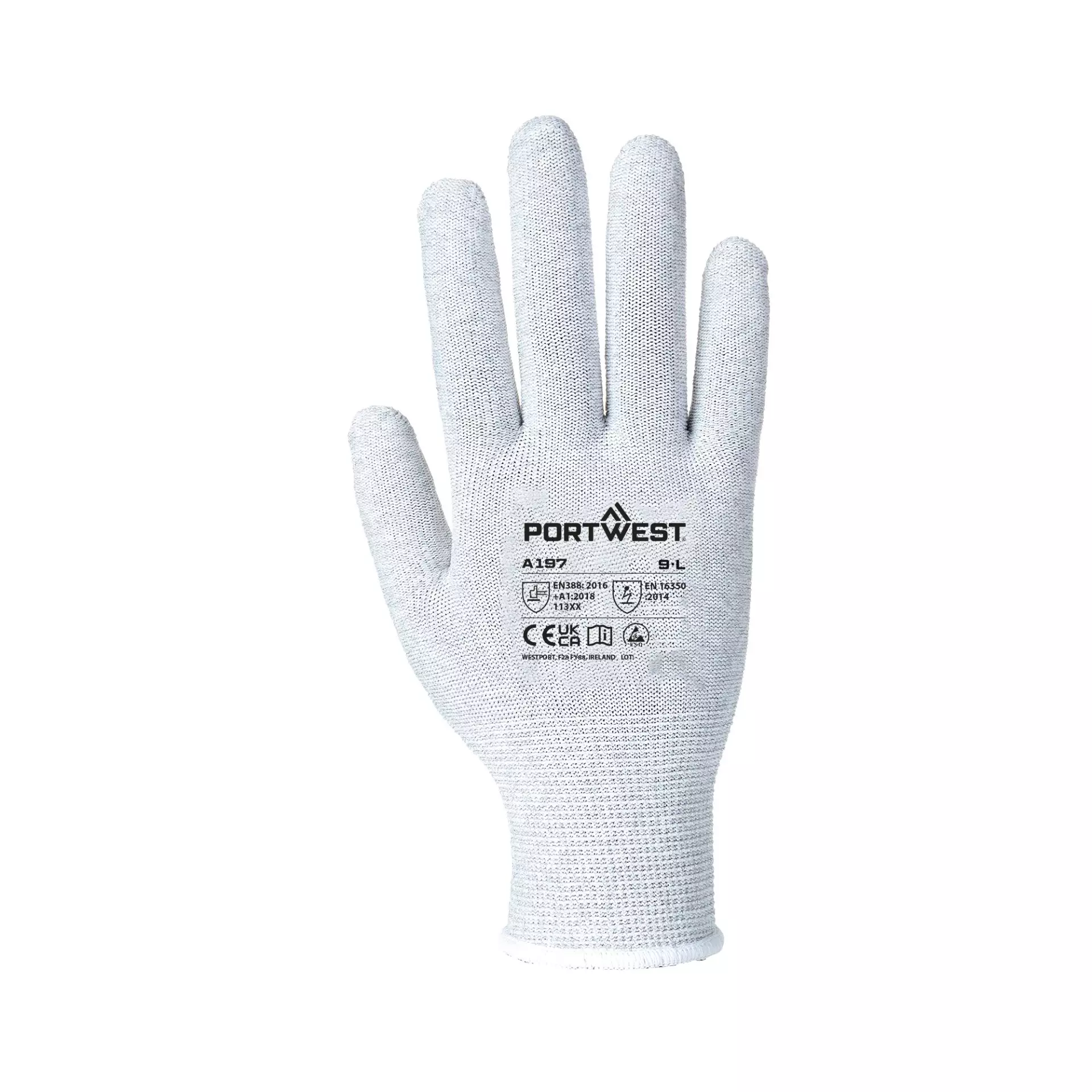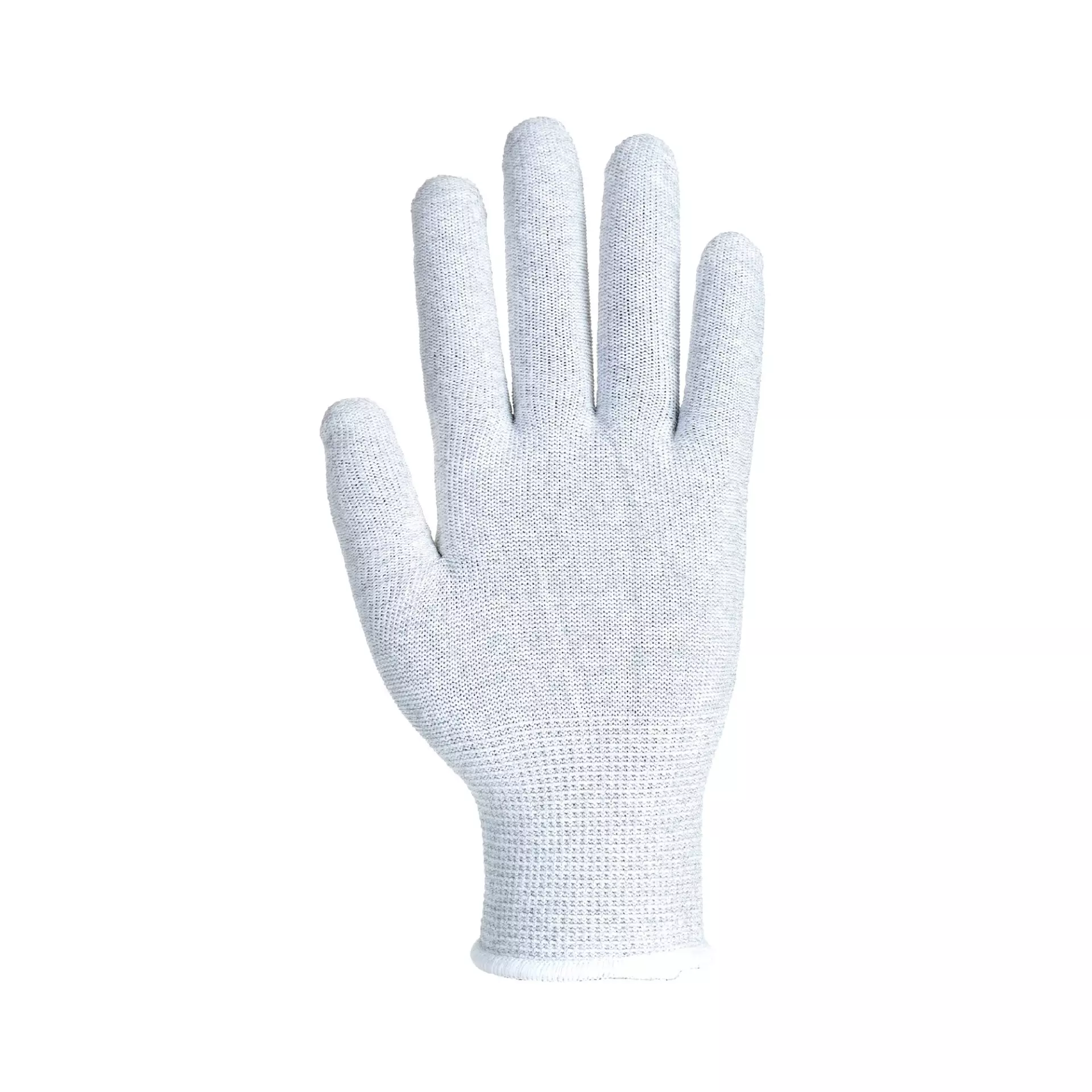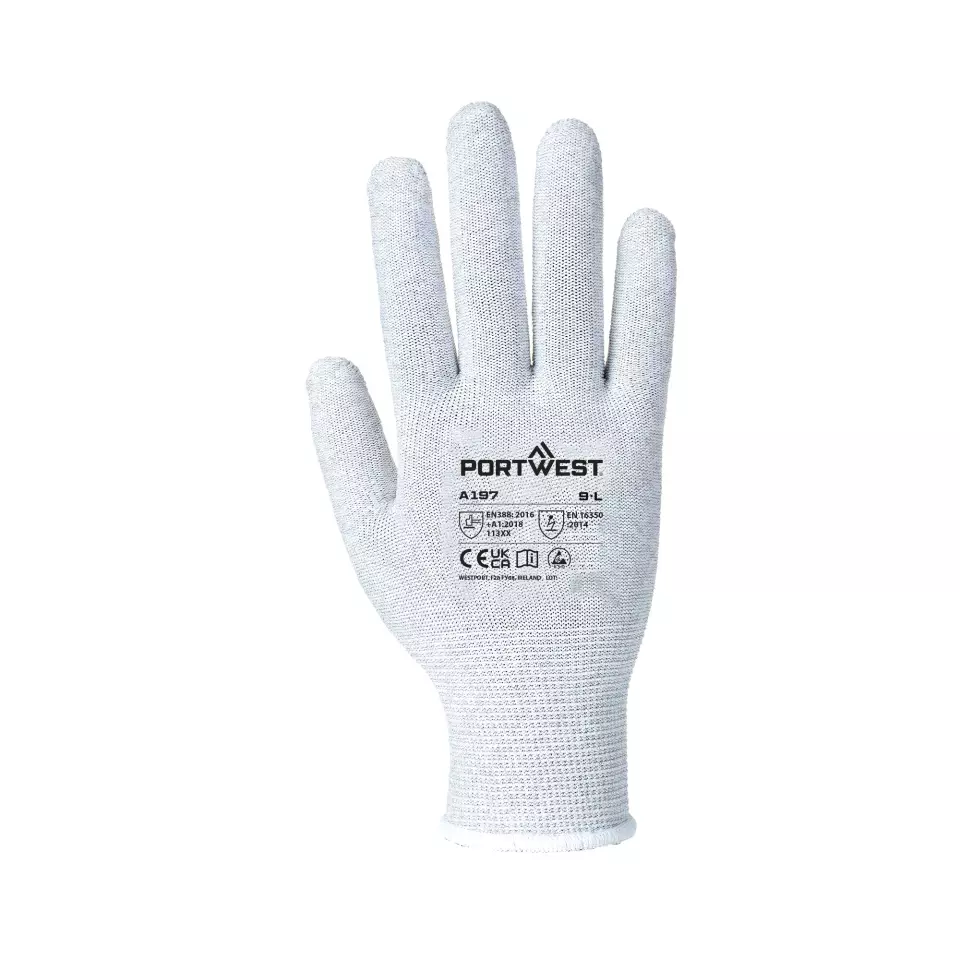

Features You'll Love

Gauge · 13
EN 61340-5-1 · Electrostatic Discharge Antistatic
Refers to the knit density of the glove fabric, affecting dexterity, comfort, and durability. Higher numbers provide better finger movement and sensitivity.
Guards the product’s sensitive electronics against damage from static electricity. This protection during manufacturing and handling prevents hidden component failure, ensuring your device works reliably and has a longer operational life.
Portwest
Antistatic Shell Glove, Grey, 12 pairs
Antistatic Shell Glove, Grey, 12 pairs
4.6 / 5
337,19 kr
Price per 12 pairs
28,10 kr / pair
Choose size
Shipping fee is 89,00 kr for orders under 875,00 kr
Features You'll Love

Gauge · 13
EN 61340-5-1 · Electrostatic Discharge Antistatic
Refers to the knit density of the glove fabric, affecting dexterity, comfort, and durability. Higher numbers provide better finger movement and sensitivity.
Guards the product’s sensitive electronics against damage from static electricity. This protection during manufacturing and handling prevents hidden component failure, ensuring your device works reliably and has a longer operational life.
Product description
This protective liner glove is constructed from an advanced polyester and carbon fiber blend, specifically designed for ESD environments. The seamless 13-gauge construction provides protection for sensitive equipment like circuit boards from natural skin oils and harmful static discharge. With touchscreen compatibility and low-linting properties, this glove offers both functionality and contamination control for precision work applications.
Product Features:
- Seamless 13 gauge liner construction
- Low linting design for minimal contamination
- Compatible with most mobile touchscreen devices
- Material composition: Polyester and carbon fiber blend
- Protects equipment from natural skin oils and static discharge
Technical Details:
- Dexterity level 5 performance
- ESD protection with resistance level R < 1.0 x 10⁸ Ω
Recommended Applications:
- ESD environments
Standards:
- CE certified
- UKCA marked
- EN ISO 21420:2020
- EN 388:2016 + A1:2018 (113XX)
- EN 16350:2014
- IEC 61340-5-1:2016